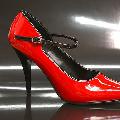ลำดับตอนที่ #7
คืนค่าการตั้งค่าทั้งหมด
คุณแน่ใจว่าต้องการคืนค่าการตั้งค่าทั้งหมด ?
ลำดับตอนที่ #7 : Choosing a Violin
Should I rent or buy?
Renting or purchasing are both good options for those who are beginning the violin. If you’re buying a violin, it is essential to find and use a reputable dealer, music store or violin maker. It is strongly recommended that you enlist the help of your violin teacher or an advanced violinist to help you choose a violin that is well-made, has a good tone and is worth buying. There are many poorly made violins out there, and price isn't the best way to determine the quality or sound of an instrument.
Before purchasing an instrument, it's a good idea to test and compare several violins before making a final decision. If you do decide to purchase online or through mail order, carefully investigate the company’s return policy to make sure you're able to return the instrument if you aren't satisfied with it.
What size violin should I get?
Violins are available in many sizes, and a knowledgeable violin maker, music dealer or violin teacher will be able to help you find the right size for you or your child. Generally, the smaller sizes (1/16; 1/8; 1/4; 1/2; 3/4) are for children, and most adults and teenagers use full size (4/4) violins.
As a general sizing guideline, when you hold the violin (placing the chin rest under your left jaw), you should be able to extend your left arm under the violin and be able to curve the tips of your left fingers around the end of the scroll, including a slight bend in your left elbow. If your fingers can't reach the end of the scroll, a smaller sized violin might be appropriate. Again, a violinist or knowledgeable music dealer should be able to assist you in finding the correct size.
I have an old violin. What’s my violin worth?
The best (and only) way to really determine the value of a violin is to take it to one or more reputable violin makers (or violin dealers) and have an expert look at it in person. They should be able to tell you in a matter of moments if it's worth much. Many inexpensive, machine made instruments have fake “Stradivarius” labels inserted in them, so a label often has little meaning.
Just a few of the many factors used in determining the value of an instrument include: whether or not the instrument is machine or handmade; who made the instrument (if it's handmade); the country or region the violin was made in; age of the instrument; sound quality, condition of the instrument; and previous repair jobs. Numerous other factors are also utilized, but again, only an expert can properly evaluate the worth of your instrument.
If the instrument does appear to be valuable, you may want to get several opinions (there are unscrupulous dealers out there). Music dealers generally charge for written appraisals (often used for insurance purposes), but they should be able to give you a rough verbal estimate if you're interested in selling or "trading up" (similar to buying a car---the value of your violin is applied to the purchase price of one of their violins).
เก็บเข้าคอลเล็กชัน


ความคิดเห็น